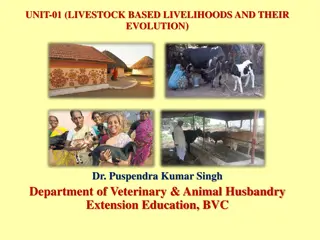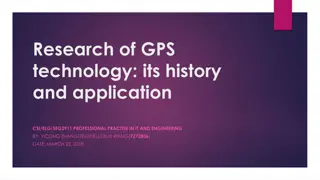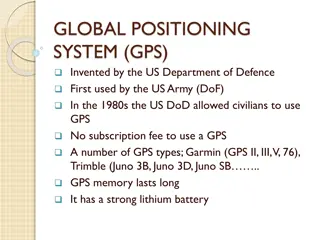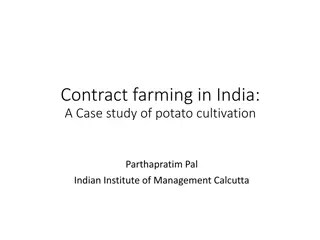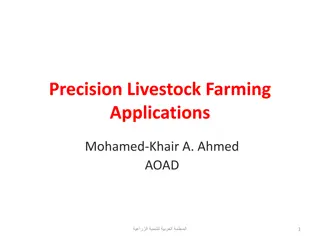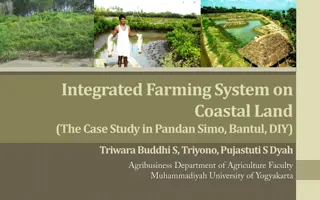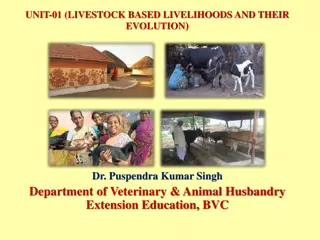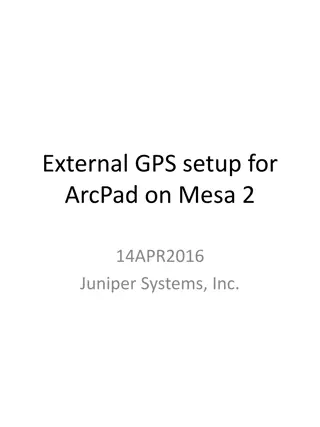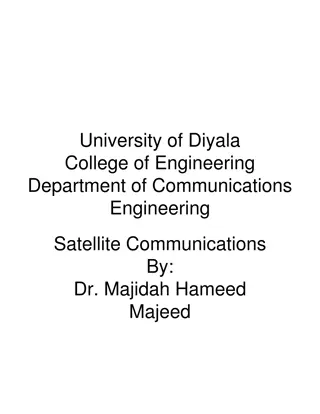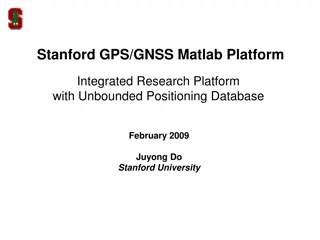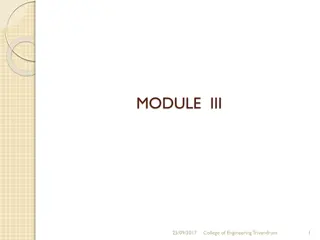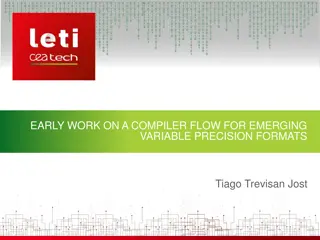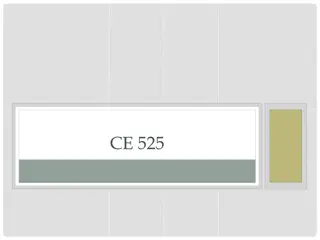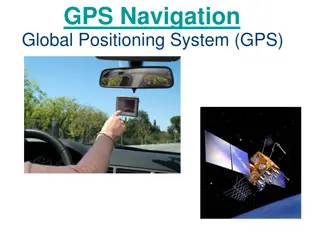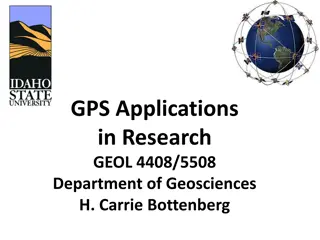Understanding GPS and Precision Agriculture in Farming
Explore the vital role of GPS technology in precision agriculture, how GPS signals are utilized for accurate positioning, the implementation of Differential GPS (DGPS) to counteract errors, and the diverse agricultural applications of GPS, including guidance systems and Variable Rate Technology (VRT) for precise input control. Learn about the types of guidance systems, such as Lightbar and Autoguidance, and how VRT optimizes the application of fertilizers, pesticides, seeding, and irrigation in farming practices.
Download Presentation

Please find below an Image/Link to download the presentation.
The content on the website is provided AS IS for your information and personal use only. It may not be sold, licensed, or shared on other websites without obtaining consent from the author. Download presentation by click this link. If you encounter any issues during the download, it is possible that the publisher has removed the file from their server.
E N D
Presentation Transcript
GPS and Precision Agriculture
GPS Global Positioning System Three Parts Space Segment 24 active and 3 spare satellites orbiting the Earth Orbital patterns and spacing of satellites provide 9-12 satellites above the horizon at any point on the Earth. This allows for each point of the Earth s surface to have a unique address. User Segment GPS receivers and the user community Control Segment 5 monitoring stations around the world Master control facility at Falcon Air Force Base in Colorado Time and distance of signals determine location 4 Satellites needed for receiver to get accurate location.
GPS Cool Facts First GPS satellite was launched in 1978. Dept. of Defense declared GPS fully operational in 1995. 24 Satellites in orbit at this moment. Cost estimated $12 billion to build & launch. Each satellite weighs about 1,735 pounds. Satellites orbit about 12,500 miles above the Earth. Satellites take 12 hours to orbit the Earth once. Russians have a system identical to U.S. system called GLONASS.
GPS Signals and Corrections Atmospheric and equipment conditions can cause errors in accuracy. The receiver, using mathematics and modeling can correct errors. In agricultural applications, the most common way to counteract GPS errors is by using Differential GPS, or DGPS. A base station is place at an accurately known location. Base station receiver will calculate the error between the actual location and the location computed from GPS signals. Improved version is Kinematic DGPS, or Real Time Kinematic (RTK) GPS. Available by subscription.
Agricultural Applications of GPS Guidance Systems Planting Spraying Spreader/applicators Tillage Harvesting Mapping Mapping yields (GPS + combine yield monitor) Variable Rate Technology
Guidance Systems 2 Types of Systems Lightbar or Parallel Tracking Operator still drives and steers the machine. Lightbar provides feedback on proper positioning reference. Autoguidance or AutoSteer Machine drives itself Operator only turns machine around, then lines up on next pass before engaging.
Variable Rate Technology (VRT) Any technology that enables the Variable Rate Application (VRA) or agricultural inputs Technology which permits precise application control of inputs. Fertilizer Pesticides Lime Seeding Tillage Irrigation
Map-based VRT Prescription Maps DGPS Prescription Map Applicator Output Controller
Benefits of VRT Economics Increased input efficiency apply only what is needed. Could reduce overall amounts of inputs used. Improved in-field equipment efficiency. Improved crop yields through optimal input use. Environmental Stewardship Minimize over-application of inputs thereby reducing the risk of pesticide and fertilizer runoff or leaching into water sources. Reduce application in environmentally sensitive areas.
Title: Creative Commons License logo - Description: Creative Commons License Unless otherwise noted, this work by the Nebraska Precision Ag Center for Excellence is licensed under the Creative Commons Attribution 4.0 International License. To view a copy of this license, visit http://creativecommons.org/licenses/by/4.0/. This product was funded by a grant awarded by the U.S Department of Labor s Employment and Training Administration. The product was created by the grantee and does not necessarily reflect the official position of the U.S Department of Labor. The Department of Labor makes no guarantees, warranties, or assurances of any kind, express or implied, with respect to such information, including any information on linked sites and including, but not limited to, accuracy of the information or its completeness, timeless, usefulness, adequacy, continued availability, or ownership.




